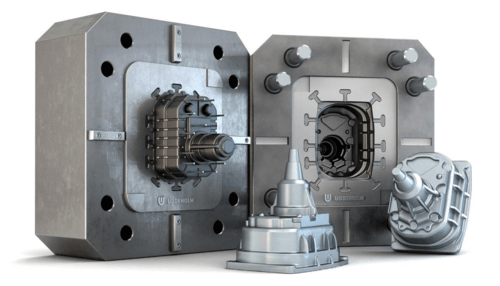Die casting is a manufacturing process that involves injecting molten metal into a mold to create complex shapes with high precision and accuracy. It is commonly used to produce parts for various industries, including automotive, aerospace, and electronics. In this article, we will explore the advantages and uses of die casting metals.
Advantages of Die Casting Metals
Die casting offers several advantages over other manufacturing processes. One of the primary benefits is its ability to produce complex shapes with high dimensional accuracy. This is due to the use of a permanent mold, which ensures consistent part quality and reduces the need for secondary operations.
Die casting also allows for high production rates and cost-effective mass production, making it an ideal choice for large-volume manufacturing. Additionally, die casting metals have excellent mechanical properties, including high strength, durability, and resistance to wear and tear. They are also highly conductive and can be easily machined, making them ideal for electrical and electronic applications.
Common Die Casting Metals
There are several metals that are commonly used in die casting, each with its own unique properties and advantages. Some of the most popular die casting metals include:
- Aluminum – Aluminum is lightweight, corrosion-resistant, and has excellent thermal conductivity, making it ideal for use in the automotive and aerospace industries.
- Zinc – Zinc is highly ductile and has excellent corrosion resistance, making it ideal for use in consumer electronics and medical devices.
- Magnesium – Magnesium is the lightest of all structural metals and has an excellent strength-to-weight ratio, making it ideal for use in automotive and aerospace applications.
- Copper – Copper has excellent thermal and electrical conductivity, making it ideal for use in electrical and electronic applications.
Uses of Die Casting Metals
Die casting metals are used in a wide range of industries and applications. Some of the most common uses include:
- Automotive – Die casting metals are used to produce a variety of automotive parts, including engine blocks, transmission cases, and suspension components.
- Aerospace – Die casting metals are used to produce parts for aircraft and spacecraft, including engine components, structural parts, and landing gear.
- Consumer Electronics – Die casting metals are used to produce a wide range of consumer electronics, including smartphones, laptops, and digital cameras.
- Medical Devices – Die casting metals are used to produce a variety of medical devices, including surgical instruments, prosthetics, and dental equipment.
Conclusion
Die casting metals offer several advantages over other manufacturing processes, including high dimensional accuracy, cost-effective mass production, and excellent mechanical properties. There are several metals that are commonly used in die casting, each with its own unique properties and advantages. Die casting metals are used in a wide range of industries and applications, including automotive, aerospace, consumer electronics, and medical devices. As manufacturing technology continues to advance, we can expect to see even more innovative uses for die casting metals in the future.










